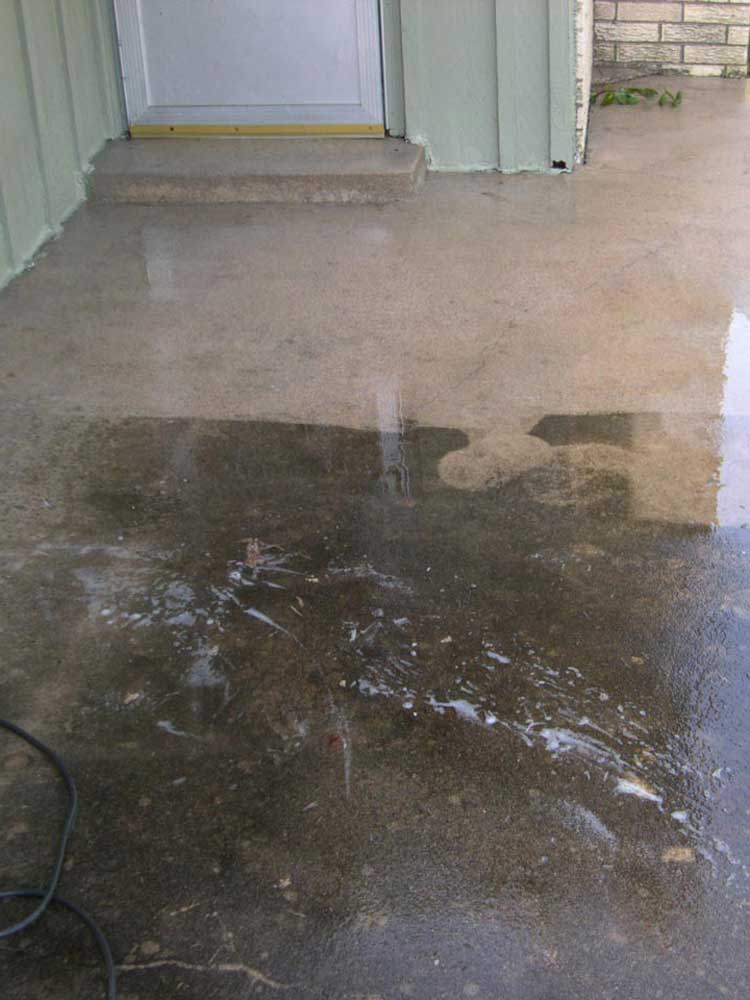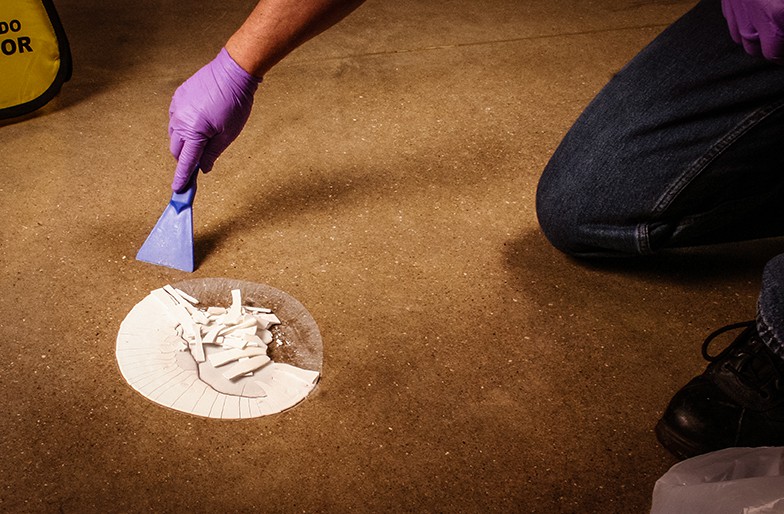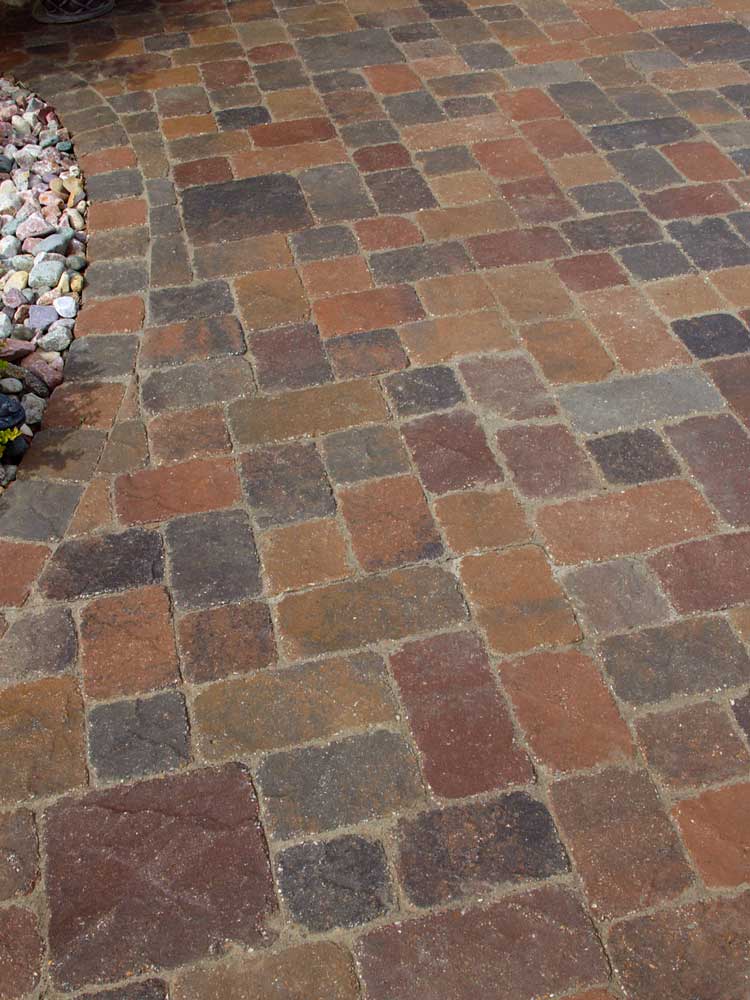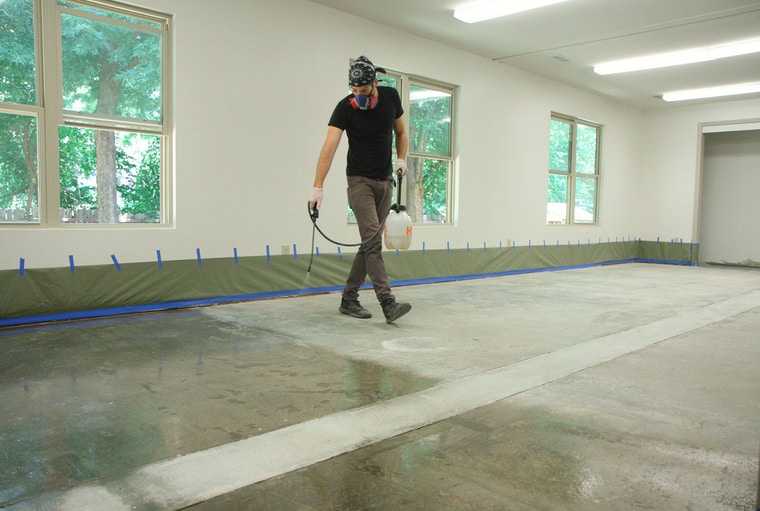As the primary material of most sidewalks, driveways and patios, concrete is everywhere you look. It’s no surprise then that concrete is frequently subjected to grease stains from food, vehicles and other sources.
Whether a grease stain is on the patio of an outdoor kitchen or barbecue grill, or on a driveway or sidewalk, cleaning and removing the grease stain properly is important for the aesthetic of your concrete surfaces. This will also help keep these hard surfaces functional and clean for as long as possible.
The earlier you can get to a grease stain on concrete, the easier it will be to remove. However, there are also options to remove grease stains that have been present for an unknown period of time.
Whether the grease stains on your concrete surfaces are mild or severe, topical or embedded, removal of these messy stains is easy with the right products.
For topical grease stains, a surface cleaner like PROSOCO’s Cleaner/Degreaser is a good place to start. For more embedded grease stains, a poultice like Oil & Grease Stain Remover is most effective.

How to remove surface grease stains from concrete
It’s a fairly simple task to remove topical grease stains from your concrete surfaces with Cleaner/Degreaser, which is specially designed to remove grease films in addition to oil, adhesives, rubber tire marks and scuffs.
According to the Cleaner/Degreaser product data sheet, this cleaner does not contain harsh acids, caustics and other solvents commonly used in other industrial degreasers, making it an effective and environmentally responsible choice for contractors, homeowners, property owners and facility managers.
Two easy preparation steps should be taken before application of Cleaner/Degreaser. First, ensure that people, vehicles, property and other surfaces adjacent to the concrete are protected from product residue, splashes, fumes or wind drift.
This surface cleaner also needs to be applied during the right weather conditions. Make sure you’re applying the product when temperatures are above freezing to avoid inflicting any damage to the concrete. In an ideal situation, the product is applied when surface temperatures are above 50 degrees F. If the concrete surface has been exposed to freezing temperatures recently, wait for the concrete to thaw before you apply the product.
Cleaner/Degreaser can be applied with a cleaning brush or mop, a low-pressure sprayer, an automatic scrubbing machine or pressure-washer. Aim for a pressure between 400 psi and 1000 psi if using a pressure-washer. A flow rate of 6-8 gallons per minute is also ideal.
Cleaner/Degreaser is dilutable with water, with dilution rates depending on the severity of the stain. For heavy stains, use 1 part Cleaner/Degreaser to 4 parts fresh water. For milder stains, dilute 1 part of the cleaner with up to 200 parts fresh water. See the Product Data Sheet for additional details and instructions.
Next, you’re ready to apply the diluted solution generously to the grease stain. Once the product has dwelled on the surface for 1-3 minutes, reapply the solution and scrub vigorously. Finally, rinse the surface with water to remove any residual cleaner.

How to rid concrete of embedded grease stains
For deeper, embedded grease stains on concrete patios, sidewalks or driveways, a poultice like Oil & Grease Stain Remover may be required.
Because this poultice works by seeping into a substrate and then pulling the stain out as it dries, it’s best to ensure that the stain and surface is dry before applying the poultice. A dry surface to start will optimize the absorption capacity of the stained substrate and the effectiveness of the poultice.
This poultice product is often described as having a pancake batter-like consistency that you pour directly onto the grease stains. Then as the poultice dries, it pulls the contaminants out of the concrete. Once the poultice is completely dry, simply sweep it up and dispose of it.
Oil & Grease Stain Remover is extremely easy to apply because it doesn’t require any additional equipment, mixing, troweling, tape or plastic covering. Simply pour the poultice onto the grease stain and then let it dry. This may take anywhere between 5 and 8 hours to completely dry. You may want to even let it sit overnight. If you do, consider placing a plastic “tent” or covering over the poultice and stain to protect it from rain and traffic while it dries.
In most instances, one application of Oil & Grease Stain Remover will remove embedded grease stains from concrete. However, some severe grease stains may take subsequent applications.
One note is that as the poultice dries, it will develop cracks. This is completely normal. A web of cracks over the entire poultice surface is your signal that it’s completely dry. Then it’s safe to use a broom or a stiff-bristled brush and dustpan to sweep up the dried poultice.
Watch this video for a demonstration of how easy this product is to use:
For stains less than 6 square feet of stained concrete, 1 quart should be enough product. The product also comes in a 1-gallon size, which can clean up to 24 square feet.
Cleaner/Degreaser and Oil & Grease Stain Remover are sold through distributors for professional use. Use our distributor locator to find the distributor nearest you, or call us at 1-800-255-4255. We’re here M-F, 8a-5p, CST.
![]()


